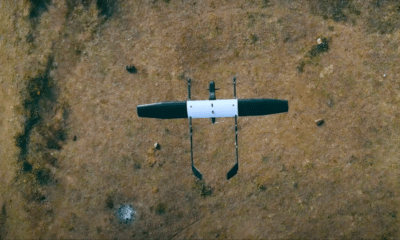Policy and Regulations
Tax architecture on VDA led to outflow of INR 32 thousand crores
Esya Centre, a New Delhi-based technology policy think-tank, has published a first-of-its-kind data-led study on the economic impact of India’s taxation framework for virtual digital assets (VDAs), with knowledge support from Taxsutra, India’s largest B2B tax portal.
The think-tank analysed the impact of three events on the centralised virtual digital asset (VDA) industry in India, announced on 1st February 2022 during the Union Budget 2022-23: (a) a levy of a flat 30 percent tax on gains from VDA trade applicable from 1st April 2022; (b) a levy of 1 percent tax deducted at source (TDS) on transactions above INR 10,000 from 1st July 2022; and (c) the provision disallowing the offsetting of losses applicable from 1st April 2022s.
The Esya Centre study titled “Virtual Digital Asset Tax Architecture in India: A Critical Examination”, found that the tax policy led to the offshoring of domestic business and liquidity to foreign VDA exchanges. This is likely to lead to a large negative impact on tax revenues, as well as a decrease in transaction traceability – which defeats the two central goals of the extant policy architecture. Specifically, it found that:
- There was a shift of cumulative trade volume of around INR 32 thousand crores from domestic centralised VDA exchanges to foreign ones, during Feb-Oct 2022, following the announcement of a new tax regime in India;
- Of this, cumulative volume of INR 25.3 thousand crores was offshored within six months of the current financial year;
- Additionally, the total trade volume contributed by Indians on foreign centralised VDA exchanges was to the tune of INR 80 thousand crores between July and October 2022;
- Implementation of the one percent TDS had the most distortionary impact out of the three tax measures/events, as Indian VDA exchanges lost up to 81 percent of their trading volumes in three and a half months between July 1 and October 15, following the levy, according to the study.
“Moreover, many Indian VDA users seem to be switching from domestic centralised VDA exchanges to foreign counterparts (approximately 17 lakh users switched in the period analysed), a trend visible starting Feb 2022 (i.e. following from the Union Budget announcement),” the study said. “The downside impact of the VDA tax architecture is likely to further accentuate capital outflow and deter international investors. This implies reduced competitiveness of Indian centralised VDA exchanges relative to international counterparts,” it added.
The Esya Centre recommends three steps to stem the offshoring of domestic business and liquidity to foreign exchanges. First, bring tax deducted at-source (TDS) on VDAs at par with securities transaction tax. Second, the government should reconcile tax rates vis-a-vis revenue maximization by ascertaining the optimal taxation point(s) using economic analysis tools such as the Laffer Curve. Third, India should adopt a progressive tax structure with differentiated rates for short term and long-term gains, in line with international best-practices.
Esya is a niche think-tank that seeks to generate empirical research and inform thought leadership to catalyse new policy constructs for the future. It simultaneously aims to build institutional capacities for generating ideas which enjoin the triad of people, innovation and value, consequently helping reimagine the public policy discourse in India.








































